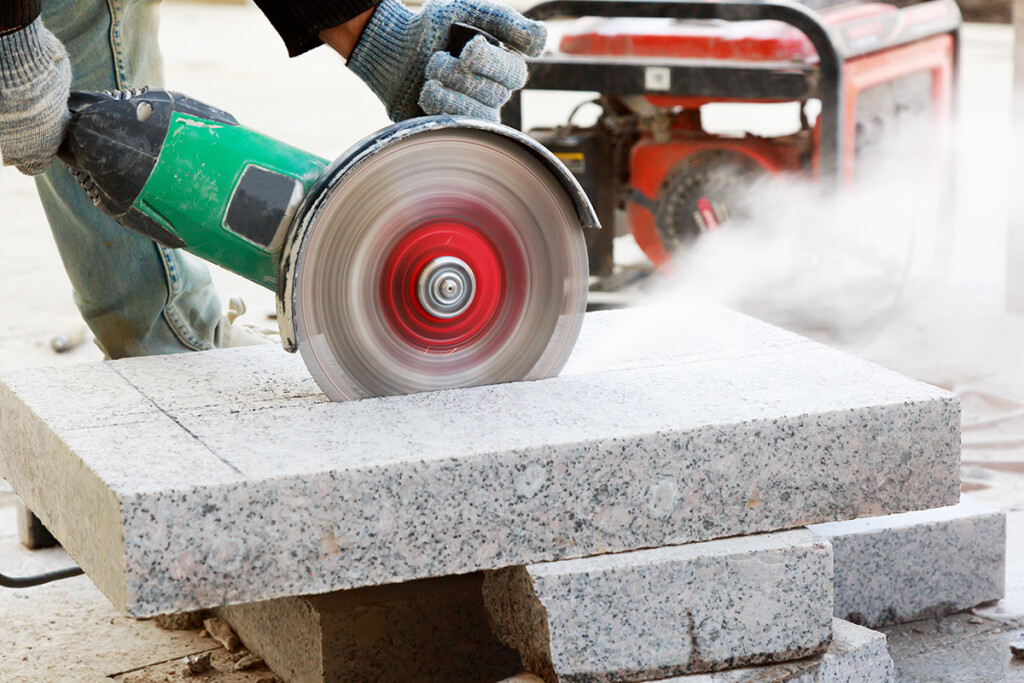Everywhere we go, we’re surrounded by volatile organic compounds (VOCs). VOCs are chemicals that turn to vapour at normal room temperature – as opposed to substances with a higher boiling point, like water.
Both natural and human activity create a cocktail of VOCs in the atmosphere. Human-generated (or ‘anthropogenic’) VOCs come from a wide range of things including fuel, cleaning products, building materials, paint, and printer ink.
VOCs aren’t all bad: in the natural world, they’re responsible for things like animal-plant communication, while for human beings, they’re what makes perfume smell good.
But certain VOCs, and VOCs overall in high concentrations, contribute to air pollution and can have serious health effects. Most commonly, these are respiratory, allergic or nervous symptoms, but some VOCs have been linked to cancer.
The changing face of air pollution
In the past, most air pollution in cities was caused by VOCs emitted by cars and other vehicles. Most people probably assume that this is still the dominant factor in air pollution. But that’s no longer necessarily the case. As an article in The Conversation reports, a recent study shows that the proportion of atmospheric VOCs that can be attributed to vehicles has dropped dramatically, thanks to vehicle emission standards and other regulatory changes.
This is obviously great news, but the study brings to light another aspect of the change, which is that more than half of VOCs in the air outside are now typically generated from chemicals other than vehicle fuel, including things like cleaning products that are used on an industrial scale.
The study also points out that historically, these non-vehicular chemicals have largely been ignored when predicting air pollution, which in turn has led to little regulatory attention.
When it comes to indoor air, the situation is even more serious, as concentrations of VOCs are typically much higher indoors than outdoors.

Protecting yourself and your workers from VOC exposure
The first step in protecting yourself and your colleagues from the hazards of VOC exposure is simply being aware that VOCs exist and can pose a risk. Following that, there are two major steps you can take.
The first is to choose low-VOC or VOC-free products where they are available. The National Asthma Council’s Sensitive Choice website is a great resource for accredited products that are low in VOCs, or otherwise designed for people with asthma and other allergic conditions.
The second step you can take is to make sure buildings are properly ventilated. This is especially a concern with new buildings, as new building materials, joinery and furniture will typically ‘off-gas’ VOCs in higher than usual concentrations. If you have printers or photocopiers in your workplace, you should also think about putting them in a well-ventilated location, as the ink they use is high in VOCs.
How Airsafe can help
Airsafe offers comprehensive [monitoring for volatile organic compounds][link to new landing page]. We can screen for up to 60 different VOCs, or conduct more targeted monitoring for specific industries and activities.
If you have any questions about VOCs, call Airsafe on 1300 888 338.
SafeWork Australia is considering introducing a national workplace exposure standard for Diesel Particulate Matter (DPM), a known carcinogen that many Australian workers are exposed to. This follows the mining industry in several states, including New South Wales, introducing its own exposure standard.
What is Diesel Particulate Matter?
Diesel Particulate Matter (DPM) consists of fine particles that together with gases make up Diesel Engine Exhaust (DEE). Essentially, DPM is soot (carbon particles) that other substances can stick to, including carcinogens like polycyclic aromatic hydrocarbons (PAH).
According to the Cancer Council, more than one million Australians per year are exposed to diesel exhaust in their workplace. This makes diesel the second most common workplace carcinogen after UV radiation. DPM exposure has been shown to increase the risk of lung cancer, and may also be linked to an increased risk of bladder cancer.
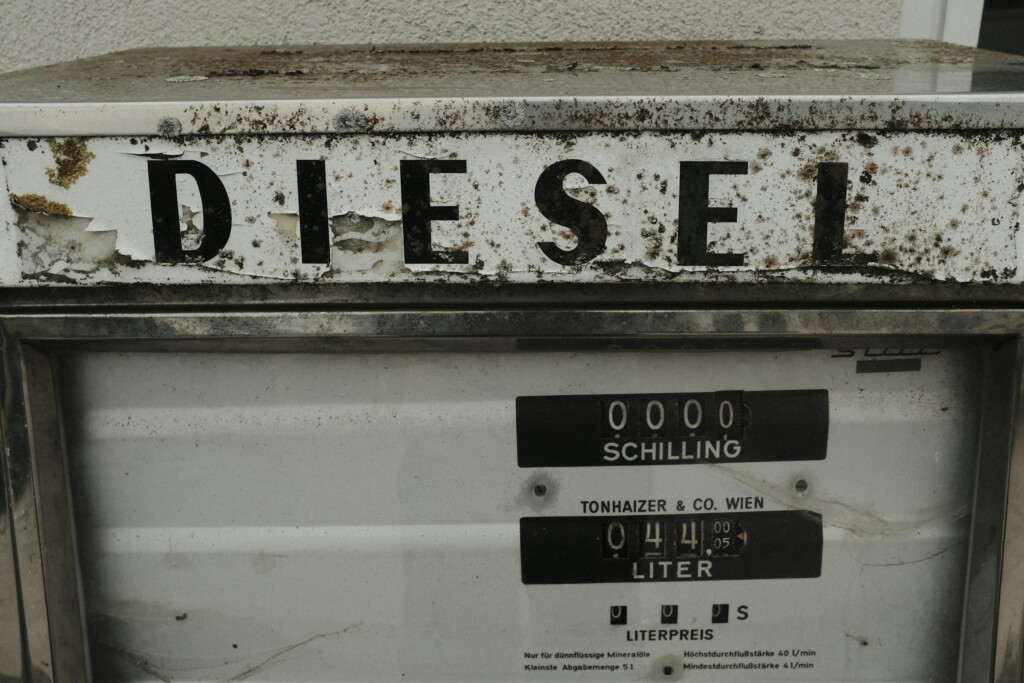
Exposure level advice from the AIOH
There is currently no national workplace exposure standard for diesel particulate matter – although there are exposure standards for some of the individual elements of diesel exhaust.
As awareness of DPM-related illness has grown, there has been increasing discussion of the possibility of introducing an exposure standard. In 2017, the Australian Institute of Occupational Hygienists published a position paper summarising the evidence and giving advice on the assessment, evaluation and control of DPM exposure.
In particular, the AIOH has the following advise on recommended exposure levels. (’EC’ is elemental carbon, the main constituent of DPM):
Notwithstanding the lack of a well-defined universal dose response relationship, experience has shown that when workplace exposures are controlled below 0.1 mg/m3 DPM (measured as submicron EC), irritant effect decreases markedly. In the absence of any more definitive data, the AIOH supports the maintenance of DPM levels (measured as submicron EC) as low as reasonably practicable (ALARP) below an 8-hour TWA [time-weighted average] guidance exposure value of 0.1 mg/m3, with the provision of applying a TWA value of 0.05 mg/m3 as an action level which triggers investigation of the sources of exposure and implementation of suitable control strategies.
In the absence of a legal exposure standard, many occupational hygienists, including Airsafe, use the AIOH’s recommendations as a guideline in monitoring exposure levels to DPM.
In several states including New South Wales, the mining industry has adopted the 0.1 mg/m3 time-weighted average measure as an industry-specific exposure standard.
Towards a national exposure standard
Safe Work Australia is conducting an ongoing consultation around the possibility of establishing a national exposure standard for DPM, with submissions closing on 4 June 2023 following a review by SLR Consulting.
In its submission to the consultation, the Australian Institute of Occupational Hygienists supports the principle of a national exposure standard, while making several criticisms of the review’s methodology and conclusions.
Whatever the outcome of the consultation, it’s important for anyone in charge of a workplace that uses diesel-powered machinery to be aware of their legal obligations, and to minimise their workers’ exposure to DPM as much as possible.
How Airsafe can help
Airsafe offers expert risk assessment and monitoring for workplace DPM exposure. If your business uses diesel, don’t put your workers at risk: call Airsafe on 1300 888 338.
If you’ve ever done occupational health and safety training, you might have come across the concept of the ‘hierarchy of controls’. Despite the complicated-sounding name, the basic idea behind the hierarchy of controls is straightforward: when you want to reduce a hazard, start with the most effective method and work your way down.
It’s a simple framework that might seem like common sense, but once you understand it, it changes the way you think about risks, whether in the workplace or in everyday life.
So what is the hierarchy of controls? It comes in different versions, but they all start from the idea that the single most effective way of controlling a hazard is to eliminate it altogether. The hierarchy then works its way down through other types of control, in descending order of effectiveness:
- Substitution: if you can’t eliminate a hazard, try to use a less hazardous version of the same equipment or material.
- Engineering controls: if substitution isn’t sufficient, look for ways to physically isolate workers from the hazard or otherwise control it. (Some versions of the hierarchy list isolation and other engineering controls as separate steps.)
- Administrative controls: if the previous steps don’t sufficiently reduce the hazard, look for ways to change behaviour or processes.
- Personal protective equipment (PPE): if all else fails, ensure workers have clothing and other equipment that protects them from the hazard as much as possible.

An example: noise hazard
How might the hierarchy of controls work in a real situation? Let’s imagine there’s a piece of machinery in your workplace that makes a very loud noise for long periods of time. You’ve had noise levels monitored by Airsafe, and we’ve shown that not only is the noise unpleasant, it might actually lead to hearing damage in workers. What do you do?
Your boss might suggest simply buying earplugs (a form of personal protective equipment) for everyone in the workplace. But the hierarchy of controls shows that this shouldn’t be your first option. Not only is it inconvenient for everyone to wear earplugs, and not only does it affect productivity by making it harder to communicate, but it’s not effective as a catch-all solution. Off-the-shelf earplugs are unlikely to offer complete protection against noise hazards, and specialised PPE is expensive and cumbersome.
Instead, let’s work our way through the hierarchy of controls:
- Elimination: perhaps the activity can be eliminated from the workplace altogether, for example by having it done offsite.
- Substitution: perhaps newer, quieter machinery can do the same job.
- Engineering controls: perhaps physical noise barriers can be installed.
- Administrative controls: perhaps the activity can be performed at a time when fewer workers are around.
- Personal protective equipment: if the above measures aren’t enough, ear protection should be considered for employees whose exposure to the hazard can’t be avoided – but it must be scientifically shown to reduce the hazard sufficiently, and the workers must be given regular audiometric testing.
As you can see, the hierarchy of controls offers an easy-to-understand framework for prioritising the solutions that will be most effective.
How Airsafe can help
While the hierarchy of controls itself is easy to understand, applying it to specific hazards requires great expertise. That’s where Airsafe’s occupational hygiene team comes in. When doing any type of risk assessment, we use the hierarchy of controls combined with our expert knowledge to recommend measures that are both realistic and effective.
Want to know more? Call Airsafe today on 1300 888 338.
Wood is used across a wide variety of Australian industries, from construction to furniture-making. Australian hardwoods are rightly renowned for their beauty, strength and durability.
But did you know that working with wood can be a health hazard? If your job involves woodworking, it’s likely that your workplace generates wood dust. As with any other form of workplace dust, employers have an obligation under work health and safety regulations to make sure their workers aren’t exposed to an extent that risks their health.
In the case of wood dust, there are clear links to cancer, among other health effects like irritation and allergic reactions.
Airsafe can help you make sure you’re keeping your people safe and healthy, and complying with your legal obligations.
How wood dust is generated
Wood dust is generated by a variety of woodworking activities. These include manufacturing wood products, machine operations like sawing, routing and turning, and hand or machine sanding. Workers can also be exposed to existing dust during cleanup activities: for example, bagging dust from local exhaust ventilation systems, using compressed air to blow dust, or dry sweeping of factory floors.
High amounts of wood dust are generated especially in the sawmilling, furniture-making, cabinet-making and carpentry industries.
Some wood activities also expose workers to formaldehyde, a strong-smelling gas used in the production of glues for the manufacturing of pressed wood products like plywood, particleboard and MDF. Formaldehyde can be present as fumes or attached to dust particles.
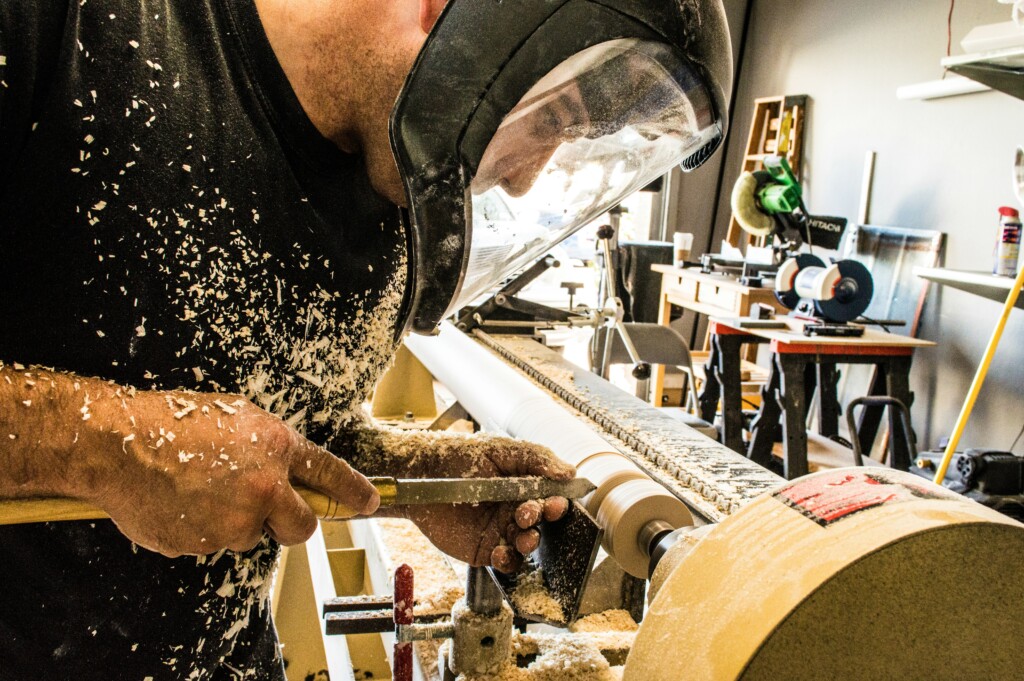
Health effects of wood dust
As with other types of dust, exposure to wood dust can result in irritation and allergic symptoms, including:
- skin disorders like allergic dermatitis
- asthma and lung problems
- noise irritation, runny or blocked nose, sneezing and nose bleeds
- throat irritation
- sore and watering eyes.
Most seriously, exposure to wood dust and formaldehyde can cause cancer: both are classed as Group 1 carcinogens. Prolonged exposure and inhalation is associated with cancer of the nasal cavity, sinuses and nasopharynx, as well as leukaemia.
Controlling wood dust exposure
SafeWork NSW has published a fact sheet on wood dust, which includes advice on managing the risks. They recommend investigating a number of control measures, including:
- using alternative woods that are less hazardous
- controlling the build-up of wood dust through work processes
- installing a local exhaust ventilation system
- monitoring dust levels
- preventative maintenance of plant and equipment
- housekeeping measures such as regular cleaning and avoiding the use of compressed air
- providing respiratory protective equipment if necessary
- informing and training workers about the risks and how to reduce them.
How Airsafe can help
The workplace exposure standards for airborne contaminants include exposure standards for hardwood and softwood dust as well as formaldehyde. Using state-of-the-art equipment, Airsafe’s occupational hygiene team can undertake an expert dust monitoring program to ensure you’re not exceeding the exposure standards and exposing your staff to dangerous levels of wood dust.
If you have questions about wood dust, don’t hesitate to call Airsafe on 1300 888 338.
Under work health and safety regulations, many airborne contaminants are subject to workplace exposure standards. Based on scientific research into the health effects of different chemicals, the exposure standards are published by Safe Work Australia and regularly updated.
These exposure standards have legal force with penalties attached: persons conducting a business or undertaking (PCBUs) must ensure that no person in their workplace is exposed to an airborne contaminant at a concentration exceeding the relevant exposure standard. They must arrange air monitoring when necessary to determine if there is a risk to their workers’ health.
Note that while the exposure standards provide a legal limit, even concentrations below the exposure standards can potentially be a health hazard. For that reason, work health and safety regulations require that exposure to airborne contaminants be kept ‘as low as is reasonably practicable’ to protect workers and others in the workplace.
There are three different kinds of exposure standard, with some airborne contaminants being subject to more than one. An exposure standard can be defined as:
- 8-hour time-weighted average (TWA)
- short term exposure limit (STEL)
- peak limitation.
To understand exposure standards, it’s important to understand the differences between these three ways of defining them.
8-hour time weighted average
Most commonly, exposure standards are expressed as an 8-hour time weighted average or TWA. This is defined as ‘the maximum average airborne concentration of a substance when calculated over an eight hour working day, for a five day working week’. In other words, it’s permissible for the concentration of the contaminant to exceed the specified level for a short period of time, as long as the average level over a working day and week is below the limit.
Time-weighted averages reflect the fact that for many chemicals, negative health impacts mainly come about through continuing exposure over a period of time.
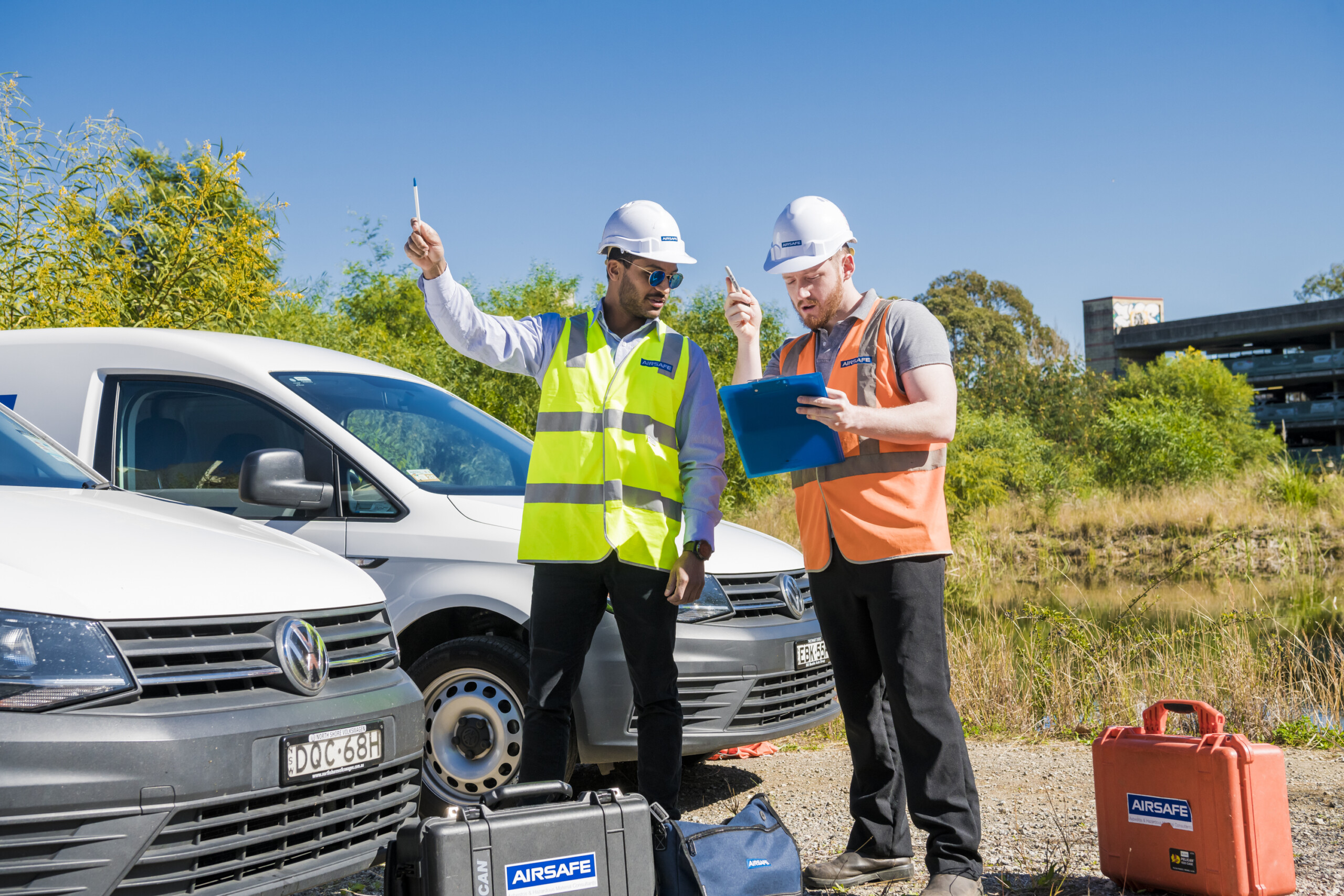
Short term exposure limit (STEL)
Some contaminants have a short term exposure limit as well as an 8-hour time-weighted average. The short term exposure limit is defined as ‘a 15 minute time weighted average exposure limit which must not be exceeded at any time during an eight hour working day, even if the exposure during the full day is less than the TWA exposure standard’.
Short term exposure limits reflect the fact that some chemicals have risks associated with high levels of exposure, even for a short period.
Peak limitation
Finally, some chemicals are so hazardous that even momentary exposure above a certain level is hazardous to health. For these chemicals, the exposure standard is expressed as a peak limitation, which is a concentration ‘not permitted at any time’.
How Airsafe can help
As our name implies, air quality monitoring is one of Airsafe’s core activities, and we have the equipment and expertise to monitor for a large variety of airborne contaminants, including respirable crystalline silica, diesel particulate matter, and other kinds of inhalable and respirable dust. Whatever the relevant exposure standards, our air monitoring reports will give you a definitive answer about whether they’re being exceeded.
To make sure you’re complying with workplace exposure standards, call Airsafe on 1300 888 338.
The long-running James Hardie legal saga contains many lessons about the history and ongoing risk of asbestos in Australia.
The long timeline is a reminder that the effects of asbestos exposure can take decades to appear. While asbestos is now banned in Australia, asbestos-related disease will be with us for many years to come, with a huge human and financial cost.
There are also lessons in the behaviour James Hardie’s senior leaders, and the company’s repeated efforts to evade or minimise responsibility for the workers it exposed to asbestos. Apart from the human cost, these efforts ultimately led to enormous reputational damage to the company, and legal liabilities that will be with them for the foreseeable future.
Few businesses will have to deal with asbestos on as large a scale as James Hardie, but any business that tries to ignore, sidestep or evade its responsibilities to keep its employees safe from asbestos exposure will ultimately pay the price.
Timeline of events
1951: James Hardie Industries is listed on the Sydney Stock Exchange. At the time, the company is the largest manufacturer and distributor of asbestos-containing products in Australia, most notably asbestos cement sheet (also known as fibro).
1978: Asbestos-related diseases including asbestosis and mesothelioma begin to be diagnosed in the company’s former employees. The company begins putting warning labels on its products explaining that inhalation of the dust could result in cancer.
1980s: Former employees of James Hardie’s asbestos operations begin making compensation claims against the company.
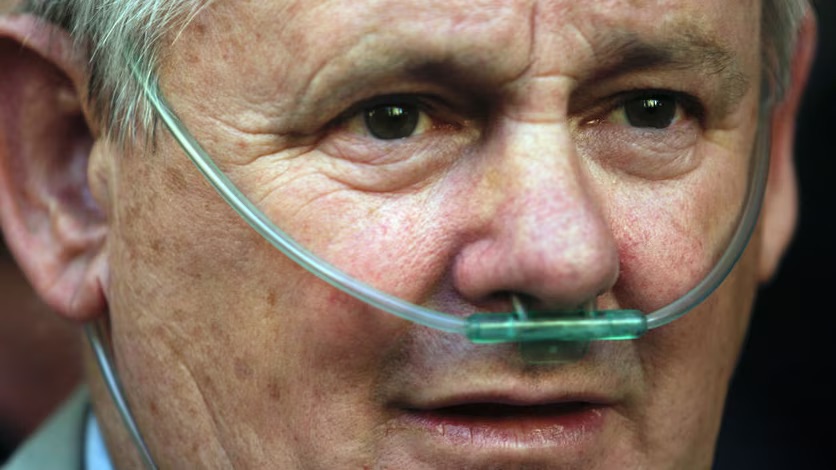
1987: James Hardie ceases all asbestos manufacturing, replacing asbestos-containing cement sheet with the asbestos-free fibre cement that is still used today.
2001: Finally acknowledging its role in the rise of asbestos-related diseases amongst its workers, James Hardie sets up a fund to handle asbestos compensation, with a one-off contribution of $293 million. Around the same time, the company relocates its headquarters to the Netherlands.
2003: After just 2 years, the $293 compensation fund runs dry, as the number of affected James Hardie employees continues to grow and the company’s estimated liabilities balloon to $1.58 billion. James Hardie refuses to provide extra funding, leading to fierce criticism from unions, governments and the media.
2004: NSW premier Bob Carr establishes a judicial inquiry led by David Jackson, QC, to determine how much money would be needed to compensate James Hardie’s asbestos victims in full. During the enquiry, the company faces criticism of the modelling used to estimate its liabilities, and accusations that the move to the Netherlands was motivated by a desire to escape its obligations to affected employees.
2006: Following the enquiry, the Asbestos Injuries Compensation Fund (AICF) is formed to implement and administer the agreement between James Hardie and the New South Wales Government. James Hardie Industries commits to funding a new trust which will pay compensation awarded against former James Hardie companies.
2012: A High Court ruling finds that seven former non-executive James Hardie directors misled the stock exchange about the company’s compensation fund for asbestos victims.
Don’t be the next James Hardie
If you’re in charge of a workplace, it’s your responsibility to make sure you’re meeting your legal obligations around asbestos. The penalties for not complying can be severe.
Depending on when your premises were built, this might mean completing an asbestos and hazardous materials survey, and maintaining an asbestos register and management plan for any asbestos that is found.
If you have any questions about how to manage workplace asbestos, call Airsafe on 1300 888 338.
Welding is an activity that’s of vast importance to our construction and manufacturing industries. It’s also one of the riskiest activities that human beings undertake in their work. The hazards associated with welding run the gamut from long-term exposure to heat and noise to serious one-off incidents like burns and explosions.
Some of the most insidious risks from welding come from long-term exposure to fumes, as well as exposure to ultraviolet (UV) radiation during electric arc welding.
Both forms of exposure have both been shown to potentially cause cancer. This has led SafeWork Australia lower the workplace exposure standard for welding fumes.
Welding fumes and cancer
In 2017, the International Agency for Research on Cancer (IARC) re-classified welding fumes as a Group 1 carcinogen, meaning that there is sufficient evidence to show they are carcinogenic to humans. Previously, they had been classified as Group 2B, meaning ‘possibly carcinogenic to humans’.
The IARC’s reclassification came from a review of a number of studies showing that welders had an abnormally high rate of lung cancer, which could not be attributed to other hazards like smoking or asbestos exposure.
At the same time, the IARC also classified UV radiation generated by electric arc welding as a Group 1 carcinogen, as it has been shown to cause ocular melanoma.
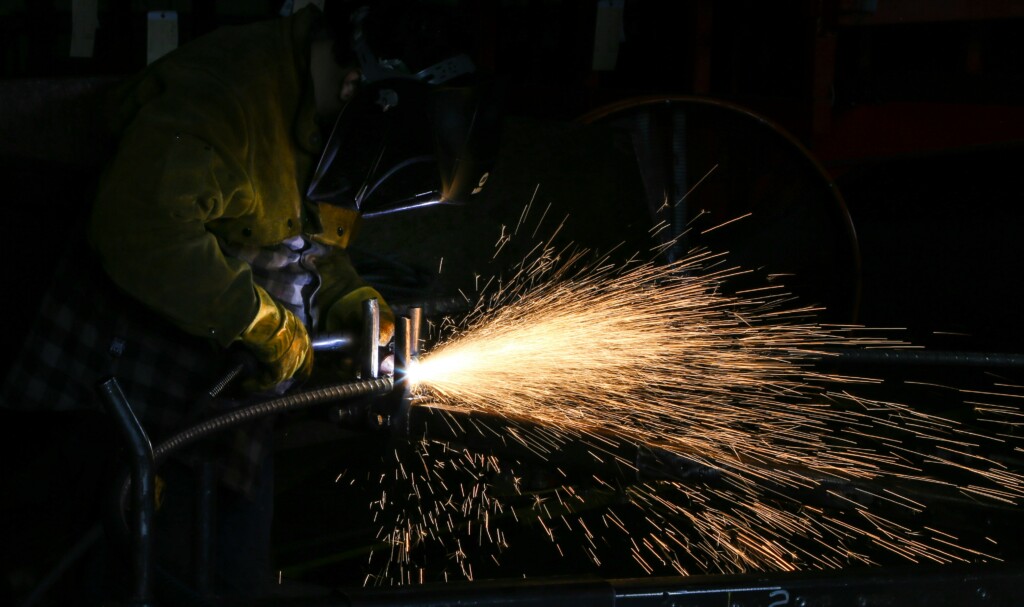
Change to welding fumes exposure standard
In response to the growing evidence of the carcinogenic nature of welding fumes, SafeWork Australia has reduced the workplace exposure standard for welding fumes (not otherwise classified) from 5 mg/m3 to 1 mg/m3 as an eight-hour time weighted average. This means that the welding fumes a worker can be exposed to must not exceed 1 mg/m3 when averaged over what is considered a typical working day.
This change in exposure standard came into force in NSW on 18 January 2024.
It’s important to note that this is the exposure standard for welding fumes in total. Individual substances that welding fumes contain also have their own standards listed in the Workplace exposure standards for airborne contaminants – all of which also need to be met.
The type of airborne contaminants generated by welding depend on the specific type of welding and the materials used, but some common substances known or suspected to carry cancer risks include beryllium, cadmium oxides, hexavalent chromium and nickel.
Your responsibilities
If you’re in charge of a workplace, you have a legal responsibility to ensure your workers are not exposed to welding fumes exceeding the standards, whether for total welding fumes or individual components.
How Airsafe can help
Identifying, evaluating and controlling the hazards associated with welding fumes is a complex process, and difficult to do without expert help. Airsafe’s occupational hygiene team can help you navigate the process and help you ensure that you’re complying with the law and your people are protected from potentially lethal health risks.
Whether your welding activities are new, or you have existing risks assessments and controls that need to be reviewed, Airsafe can help. Our expert technicians can also conduct air monitoring to determine whether your welding processes comply with the exposure standards.
For any questions about welding fumes, contact Airsafe on 1300 888 338.
The news about asbestos-containing mulch being discovered in sites across Sydney, including schools, has raised once again the issue of asbestos in schools. Over the years, the risks posed by potential exposure to asbestos on the part on students and staff have frequently been in the news.
Following a number of discoveries of asbestos in NSW public schools in the early 2000s, the state government reviewed its approach to asbestos, creating a centralised asbestos management plan which all government schools are required to follow. Each individual school’s asbestos register is also publicly available online.
This increased coordination and transparency has been a welcome development, but it has also revealed the scale of work required to clean up the legacy of asbestos in school buildings and groups. Inevitably, not everyone has been satisfied with the speed of the government response.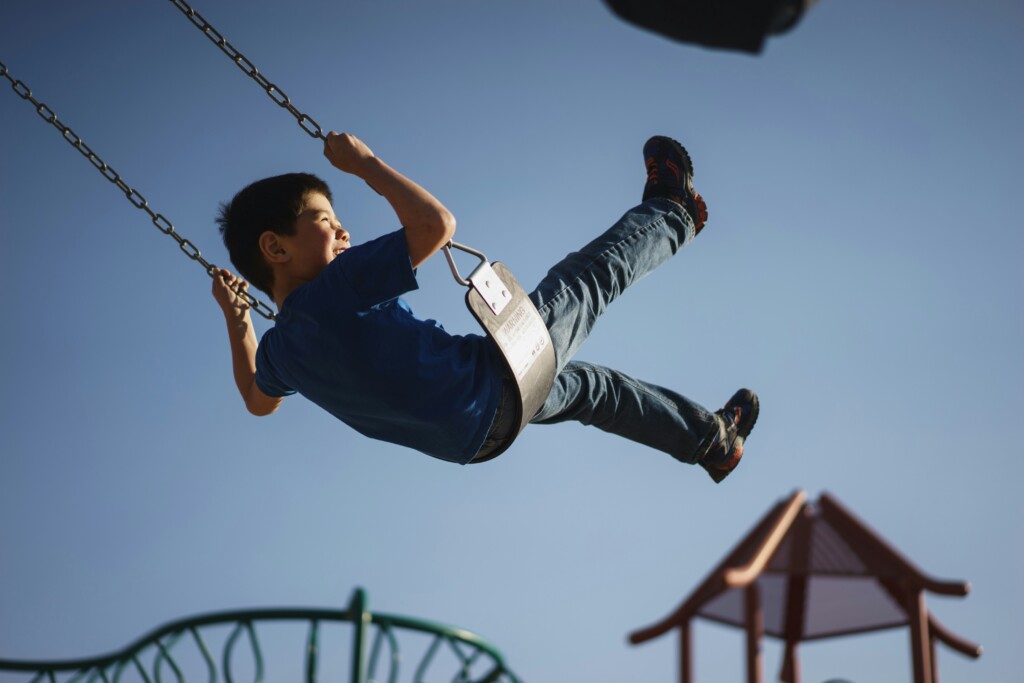
The schools asbestos management plan
The NSW Department of Education’s Asbestos Management Plan for NSW Government Schools is the central document outlining the responsibilities and approach that the government requires schools to take around asbestos identification and control.
The management plan includes:
- a list of requirements around asbestos, including notification of planned asbestos works and maintaining an asbestos register
- responsibilities of the various parties involved, including the Department of Education, school principals and contractors
- principles and processes around the management of asbestos
- control and mitigation measures where asbestos is identified
- specific advice on asbestos when found in school grounds and buildings respectively
- procedures for asbestos removal
- procedures for responding to asbestos incidents and emergencies.
In addition to this central asbestos management plan, some schools where asbestos has been identified also have site-specific asbestos management plans.
The schools asbestos register
All government schools in NSW where asbestos has been identified have are part of a publicly available schools asbestos register. You can look up any school to see its own asbestos register, together with works notifications or site-specific management plans where relevant.
While making school asbestos registers public is praiseworthy from a government transparency point of view, it’s also increased the visibility of asbestos issues. Analysis of the registers has found, for example, that more than 100 schools contained friable asbestos as of 2019, leading to criticism from the then state opposition.
Although concern about asbestos is always understandable, especially when there’s a possibility of children being exposed, it’s also worth noting that the perception of an asbestos crisis in schools is partly an effect of the public availability of information – and it’s better to have the information out there than not.
Airsafe’s involvement
Airsafe has been deeply involved in the process of auditing and advising schools over several decades. We continue to offer services to schools including asbestos surveys and asbestos registers, to help keep NSW’s kids and teachers safe.
For any questions about our services, you’re welcome to contact Airsafe at 1300 888 338.
From 1 July 2024, there will be an Australia-wide ban on the use, supply and manufacture of engineered stone benchtops, panels and slabs.
The ban is coming into place in response to rising rates of silicosis, an occupational lung disease caused by breathing in small particles of silica dust. Although there are a range of activities that can generate silica dust, the rates of silicosis have been particularly high in engineered stone workers.
What is engineered stone?
According to updated Work Health and Safety Regulations, engineered stone is defined as an artificial product that:
- contains at least 1% crystalline silica as a weight/weight concentration,
- is created by combining natural stone materials with other chemical constituents (such as water, resins, or pigments), and
- becomes hardened.
Engineered stone has been commonly used in Australia for kitchen benchtops, as an economical alternative to natural stone products like marble or granite. It’s known by various brand names including Caesarstone, Essastone and Quantum Quartz.
Why is engineered stone being banned?
When products containing crystalline silica are subject to mechanical processes like crushing, drilling, grinding, sawing or polishing, they can generate tiny, invisible dust particles known as respirable crystalline silica (RCS).
RCS particles can penetrate deep into the lungs and cause a serious, irreversible disease known as silicosis. Over the past decade, there have been over 500 documented cases of silicosis in Australia.
Crystalline silica occurs in natural stone as well as engineered stone. So why the ban on engineered stone specifically? According to Safe Work Australia:
While silicosis cases have been reported in workers using different types of silica-containing materials across a range of industries, a disproportionate number of silicosis cases are in engineered stone workers. In these workers (compared to workers exposed to silica from natural sources), silicosis is associated with a shorter duration of exposure to silica, faster disease progression and higher mortality.
Will silica still be a concern after the ban?
Even after the engineered stone is in place, there will still be a need for respirable crystalline silica risk assessment and monitoring services like those provided by Airsafe. This is for a number of reasons:
- The ban is only on engineered stone. Other products that contain crystalline silica, including natural stone, are not being banned. While the risk from working with these products is lower, it still exists and needs to be controlled.
- Only engineered stone benchtops, panels and slabs are being banned. Engineered stone products that are not intended to be processed, such as prefabricated sinks, jewellery and garden ornaments, will not be subject to the ban. However, any work that involves processing these products must be controlled.
- Previously installed engineered stone can still be worked on. Repairs, minor modification, removal and disposal of engineered stone benchtops, panels and slabs installed prior to the ban won’t be subject to the ban. However, all such work will need to be controlled, and businesses will need to notify WHS regulators such as SafeWork NSW in advance.
How can Airsafe help?
Whether you’re preparing your business to comply with the ban, or planning to engage in permitted work with engineered stone or other silica-containing products after it comes into force, Airsafe’s expert occupational hygiene team can help you comply with your legal obligations and keep your workers safe. We offer risk assessment, air monitoring and advice on controlling exposure to respirable crystalline silica.
For any questions about crystalline silica, call us on 1300 888 338.
In the mid 2010s, the benign sounding ‘Mr Fluffy’ became a household name in the ACT and parts of New South Wales, as asbestos was discovered remaining in homes where asbestos-containing loose fill insulation had been installed by the company of that name during the 1960s and 1970s.
The discovery was all the more shocking as a 1990s government eradication program had assured the affected homeowners that their homes had been rid of asbestos.
A decade later, we’re now in a position where the loose fill asbestos insulation issue is being resolved – but only at the expense and inconvenience of acquiring and demolishing hundreds of affected homes.
Why is loose fill insulation deadly?
Loose-fill insulation is a particular concern for asbestos exposure because, as the name implies, it’s a loosely packed form of asbestos which makes it easy for fibres to circulate in the air. In other words, it’s an inherently friable form of asbestos with a high level of toxicity.
With loose-fill insulation, as with other forms of friable asbestos, there is nothing to prevent fibres becoming airborne. It therefore poses a much greater risk than bonded forms of asbestos like fibro in two ways: it’s easier to breathe in asbestos fibres if you go up into your ceiling, and its also easier for fibres to drift from the ceiling to other parts of your house.
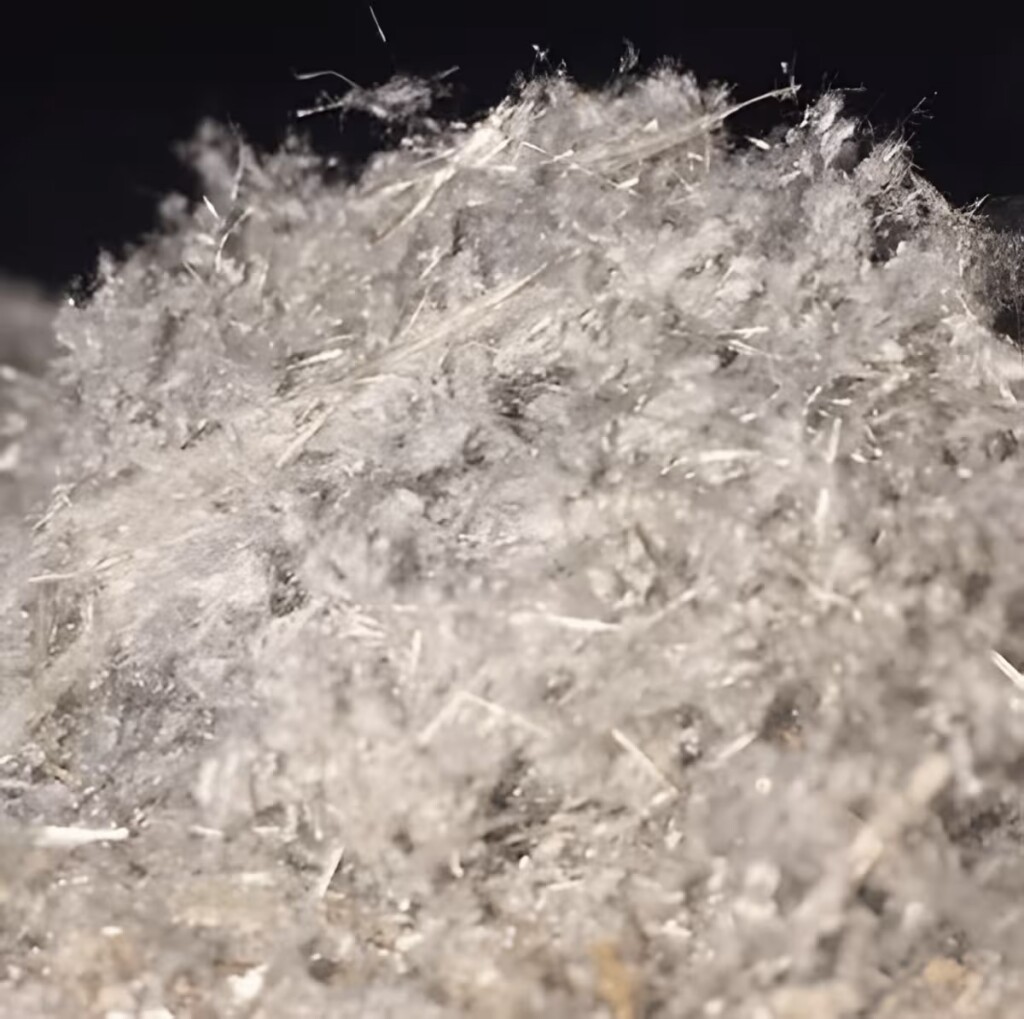
Governments forced to take action
As the scandal progressed, both the ACT Government and NSW Government were forced to take increasingly serious action. The conclusion reached was that this particular form of asbestos was so difficult to eradicate that there was no adequate form of remediation short of demolishing the affected houses. In the end, both governments launched buyback schemes (with financing from the Australian Government extending to $1 billion in ACT’s case).
Many of the affected houses have already been demolished, and both the ACT and NSW have ongoing programs to clean up the rest.
Loose fill asbestos discovered in Victoria
Meanwhile, in late 2023, there was a sign that the Mr Fluffy saga was not yet over: a small group of properties containing the company’s loose fill insulation were discovered in regional Victoria. The Victorian government is understood to be considering a buyback and demolition scheme similar to that undertaken in the ACT and NSW.
The Mr Fluffy legacy
In a sign of the saga’s deep impact on the ACT community, a forest shelter has opened at the National Arboretum in Canberra as a ‘place of reflection’ to remember the impact of loose fill asbestos on the lives of Canberrans.
At Airsafe, we hope another ongoing legacy of the Mr Fluffy saga will be a greater awareness among Australians of the dangers of asbestos and the need to avoid complacency about its eradication.
If you have concerns about loose fill insulation or any other type of asbestos, call Airsafe on 1300 888 338 to talk about our asbestos services including surveys, testing and air monitoring.
